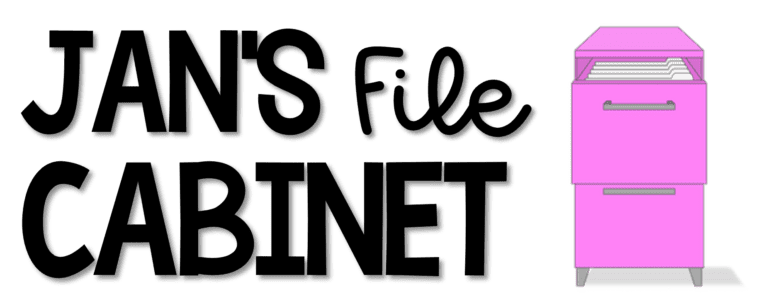For some students, analyzing a text can be as exciting as watching paint dry. So why not get them actively engaged with what they’re reading and spice it up a bit?
One of our ultimate goals is to help our intermediate and middle school students develop the skills necessary to become strong independent readers. One of the skills they need is the ability to analyze a text.
Analyzing a text, also known as close reading, involves breaking down its structure and ideas so we can understand it, think critically about it, and draw conclusions from it.
As teachers, we get excited about analyzing literature, right? It’s so much fun to discuss the deeper meanings in a text. I get super pumped about discussing the author’s perspective, and I LOVE to interpret tone and mood, symbolism, figurative language, and all those things.
But you and I both know that analyzing a text can be less than thrilling for many students. Sometimes they don’t get as excited as we would like them to.
Part of the reason may be the approach.
Table of Contents
ToggleGet Students Excited about Analyzing a Text
Most of us have had our students annotate texts with highlighters, sticky notes, colored pencils, and the like. They typically underline, circle, draw arrows, add brackets, and write notes in the margins to mark important parts of the text and record their thoughts.
These annotation methods are valuable, and students will learn how to analyze a text in these ways. But this process can become tedious; sometimes, we just need to spice it up!
One way to do this is with authentic tasks. Students will still annotate the text, but the real-life nature of the task gives them a reason for doing it, generating interest and motivation.
Students will be excited about text analysis before you know it!

Choose an Authentic Task when Analyzing a Text
So what is an authentic task?
An authentic task is a learning activity designed to mirror real-world situations. These tasks are often open-ended and require students to think critically and creatively. As a result, students are more likely to view what they are learning as relevant and meaningful.
Sometimes students need a push… a hook, to get them to bite. Enticing them with authentic tasks is that hook!
Three authentic tasks that can spice up text analysis include:
- Act out a scene in a fictional text.
- Debate an issue with nonfiction.
- Perform dramatic poetry readings.
By having students participate in an authentic real-life task, they will naturally make all the annotation notes in preparation for it. In addition, they will gain a deeper understanding of the text because they will be actively engaged.
Woohoo! No more pulling teeth, folks.
1. Act out a scene in a fictional text.
One way to get students actively engaged with fictional texts is to have them act out a scene. The genius behind this is that they still have to annotate the text to interpret it and write a script.
It should take approximately two 60-minute class periods to complete the task, depending on the length of the excerpt. Keep in mind that the scripts don’t have to be perfect, nor does the acting. The most important thing is that students take time to analyze and interpret the passage.
Make sure students are familiar with the literary concepts you want them to focus on when analyzing a fictional text. Some examples include characterization, conflict, plot, tone and mood, irony, suspense, theme, etc… The possibilities are endless, so they need to be focused.
When creating the scripts, students should plan their actions and dialogue based on evidence in the text. You can even have them defend their choices and cite specific evidence.
To have your students act out a scene from a fictional text:
- Choose a scene from the book with rich text for analysis. Make sure the excerpt can be easily translated into a script.
- Divide your class into small groups (or even just partners) based on the number of characters in the excerpt.
- Show the class an example of a script so they understand the task.
- Provide time to analyze the excerpt and make annotations.
- Provide time to create a short script (one page works well) and to practice acting it out.
- Have students use their scripts to perform the scene. They can perform in front of the class or just for you as you walk around and visit each pair or group.
It may help struggling readers to have them identify the 5 Ws and H first (who, what, when, where, why, and how). This information will help students gain a general overview of the scene. Then they can look more closely at the literary concepts.
2. Debate an issue with nonfiction.
A way to get students actively engaged with nonfiction texts is to have them debate an issue. This will give them a genuine reason for analyzing a text and making annotations.
Depending on the length of the article(s), it should take approximately two 60-minute class periods. The debates can be informal, so there’s no need to go into detail about the formal debate structure (unless you want to). The most important thing is that students take time to analyze and interpret the article(s).
To set them up for success, make sure students are familiar with nonfiction elements, such as text features and structures. While annotating, they can explore concepts such as the central idea, author’s word choice, author’s purpose, author’s perspective, and persuasive techniques, to name a few.
When developing their arguments, students should base their claims and reasons on evidence in the text. They should also look for claims that support the other side of the issue and think about how to counter them so they will be ready to defend their stance during the debate.
To have your students debate an issue with nonfiction:
- Choose an article or two with rich text for analysis. Make sure two sides of the issue are presented within the text(s).
- Divide your class into small groups (or even just partners). You can do a whole class debate or have mini debates between pairs or small groups.
- Show the class an example of a claim with reasons and evidence so they understand how to build an argument.
- Provide time to analyze the article(s) and make annotations.
- Provide time to outline arguments and practice debating.
- Have students use their notes to perform the debate. They can debate in front of the class or just for you as you walk around and visit each pair or group.
It may help struggling readers to have them record pros and cons on a graphic organizer when analyzing their texts. T-charts and Venn diagrams work well for this and will help students better understand the issue before building their arguments.
3. Perform dramatic poetry readings.
When working with poetry, a way to engage students is to have them perform dramatic poetry readings. They will be more motivated to engage in poetry analysis if they have an authentic reason and task to perform.
Depending on the length of the poems, this should take approximately two 60-minute class periods. The readings can be informal, and the focus should be on their interpretations. The most important thing is that students take time to analyze the poems and interpret them.
Ensure students are familiar with the elements of poetry so they are more successful with analyzing their poems. They can explore concepts such as figures of speech, sound devices, figurative language, symbolism, author’s perspective, and setting, just to name a few.
Students should analyze each line in the poem and decide which words to emphasize and which actions to perform to help the audience understand the poem. To add another level of challenge, you can have them cite specific evidence from the poem to defend their choices.
To have your students perform dramatic poetry readings:
- Choose poems that have rich text for analysis. Choose one for each student, or you can have them choose.
- Decide if students will work independently or with a partner. Poems for two voices work well if you choose to have them work with partners.
- Perform a dramatic reading for them so they understand the task. Explain your creative decisions based on your interpretation of each line.
- Provide time to analyze the texts and make annotations.
- Provide time to practice the readings.
- Have students use their annotated poems to perform their readings. They can perform in front of the class or just for you as you walk around and visit each pair or group.
The performances should be dramatic, with exaggerated expressions and actions. It’s also fun to include props and costumes!
Additional Benefits of Authentic Tasks
While engagement is one benefit of using authentic tasks, there are a few others.
- Authentic tasks are ideal for struggling readers because they provide another way for students to access a text. This allows them to actively engage with the material and develop a deeper understanding using a variety of modalities.
- This approach is also ideal for higher-level learners who are already proficient with analyzing texts. Authentic tasks allow them to collaborate and use their creativity. In this way, active engagement with a text can act as an authentic reading response.
- Finally, participating in authentic tasks can help students improve their overall independent reading. The more excited they are to engage with text analysis, the more motivated they will be to stop and think about what they are reading and make annotations. Students will naturally become better readers the more they engage in this practice.
Active engagement with authentic tasks can spice up text analysis. I hope this has inspired you to give one or more of these a try!
If you need help creating an environment where students can focus while working with partners and small groups, consider reading 6 Effective Ways to Calm the Classroom.
If you don’t want to miss my upcoming blog posts, join my email list. By signing up, you’ll also receive exclusive freebies!



